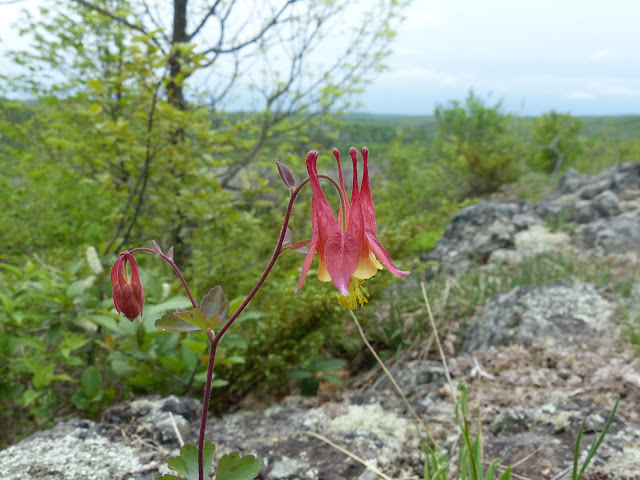Permitted Collecting
What is a State Natural Area, and how does the Museum utilize these areas of high-quality natural communities through collections projects and public programs? Our relationship deepens this summer as we join roughly 40 other individual researchers and institutions permitted to conduct collection and research activities within the state's 691 State Natural Areas.
Bayfield County alone is home to nearly 30 SNAs. Bark Bay Slough, Houghton Falls, and Moquah Barrens are just a few of these regional gems. Areas like these are managed by the Wisconsin Department of Natural Resources and its various partner organizations, and within the SNA boundaries are rare and/or high-quality ecological landscapes and natural communities. In order to identify areas in which to focus SNA program efforts, "pre-settlement" communities, or those present during the mid-1800's, are used as ecological reference points.
 |
| Bog Coppers nectar almost exclusively on cranberry plants. These WI rare species can be observed at the Lost Creek Bog SNA in the Bayfield peninsula. Photo by Rob Routledge. |
According to the WI DNR 2021 State Natural Area Strategy, a whopping 90% of the state's designated rare plant species and 75% of rare wildlife species can be found within SNAs. This includes the state-threatened Braun's holly fern, whose dark green fronds grow in cool crevices of St. Peter's Dome, and the rare bog copper and bog fritillary species of butterflies observed in the wetlands of Lost Creek Bog. Many of these biologically valuable members of natural communities are being protected through SNA status by way of low-impact recreation regulations. Hiking, nature viewing, and even hunting are allowable within SNA boundaries and many members of the public enjoy the ability to recreate within these special areas.
All State Natural Areas in our county are publicly-accessible, and the Museum regularly brings program participants out for deep-dives into our area's natural history. In the spring, our popular wildflower hikes take us to beautiful visitas like St. Peter's Dome and Juniper Rock Overlook within the North Country Trail Hardwoods, where we look but don't touch the array of blooming ephemerals and early season plants.
 |
| Eastern red columbine grows among juniper shrubs and blueberries atop the rocky outcropping of Juniper Rock Overlook in the North Country Trail Hardwoods State Natural Area. |
Through our partnership with the Wisconsin Master Naturalist program, a network of trainees further explore SNAs with our expert guest instructors, who help interpret the landscape and biological communities for this new generation of interpreters of the Northwoods. Intrepid birders have enjoyed sightings during paddle trips into Bibon Swamp and Bark Bay Slough, and various groups have explored the soil, fungi, and older-growth hemlocks of Drummond Woods throughout the year. While we've more than capitalized on field experiences for program participants, there remain other opportunities for us to engage with SNAs.
With the encouragement of our volunteer herbarium specialist, and my personal interest in the Museum collecting local fen plants for inclusion in the collection (as influenced by Naturalist Emily Stone's developing expertise in fen ecology), we've made the move to begin collecting traditionally "untouchable" plants.
Securing a State Natural Areas Research or Collection Permit was no large task - in fact, our application was approved the very same afternoon it was submitted. So it surprised me to learn that only about 40 permits have been distributed annually in the state of Wisconsin. Within this small pool, researchers and students have supported various projects through the collection of specimens living in SNAs.
As for the Museum's goals, we aim to concentrate collection efforts in the Namekagon Fen State Natural Area. Here we will collect just 1-2 plants total of each species of interest, such as carnivorous horned bladderwort and purple pitcher plant. These specimens will be temporarily pressed in the field before returning to the Museum for final preparation and preservation in our herbarium. Then the opportunities for interpretation are numerous! We hope that these limited occasions of disturbance caused by strategic collecting will allow us to contribute towards our growing understanding and stewardship of these natural communities through workshops, displays, and other interpretive media.
For areas that are managed for the protection of natural communities, they sure get a lot of human interaction - and that's just fine. After all, as animals ourselves we too are a part of nature, and human communities have utilized and stewarded these very areas for centuries. While the management of these areas may have changed over time, I feel strongly that our appreciation of their diverse makeup has and will continue for generations.

